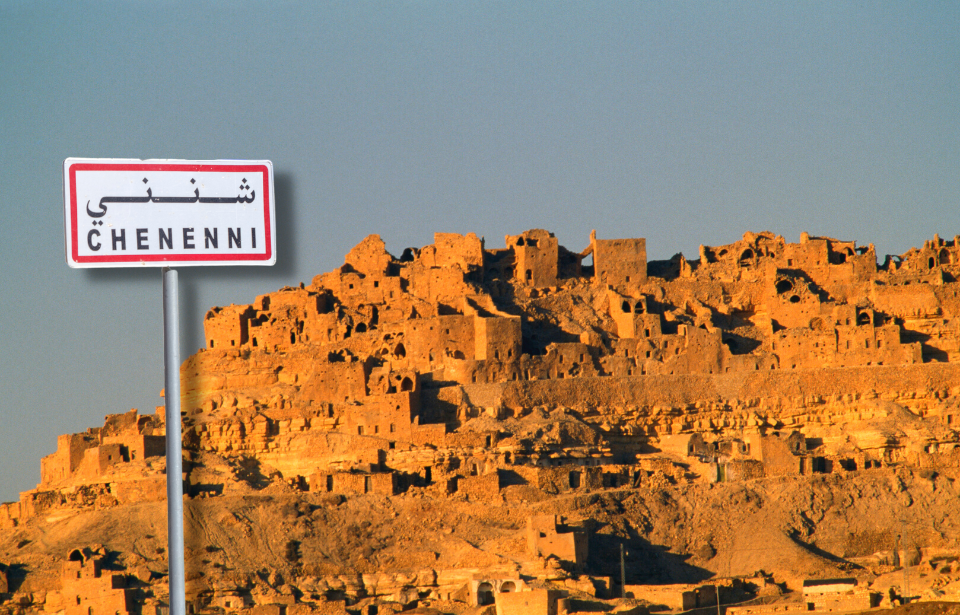The people who choose to live in Chenini, a small mountainside village in Tunisia, have many forces working against them. As the rest of the world turns toward modernity, the village’s remote location prevents it from adopting the same conveniences. Things like climate change and lack of vital infrastructure have caused a significant number of residents to migrate, leaving behind a tiny population that struggles to survive.
Chenini was built into a mountainside
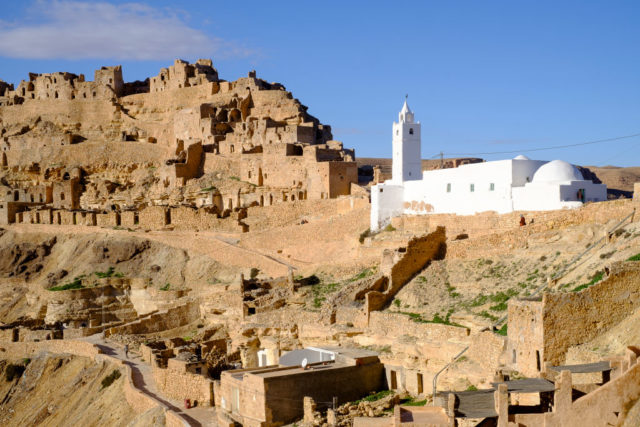
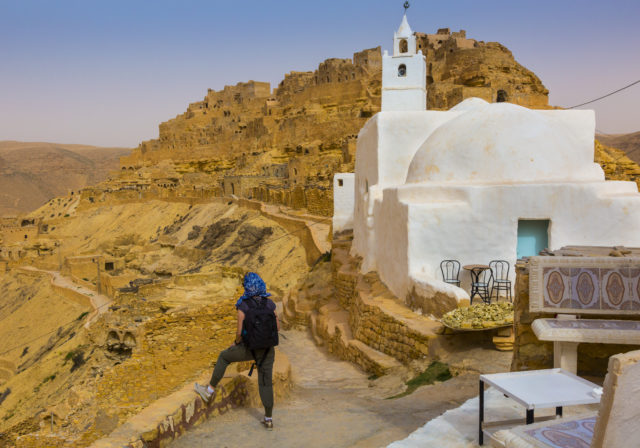
The village of Chenini is located in the Tataouine region of Tunisia and dates back to the 12th century. It was built into the top of a mountainside and is still partly inhabited today. As villagers collected in the area, they built fortified granaries that allowed them to store crops and food as well as protect them from pillagers.
The main building in the village is the Mosque of the Seven Sleepers, which was also built during the 12th century. It is a large white building that stands out against the yellow ochre of the surrounding mountainside. In contrast, villager homes have been dug out from the rock face to create cave dwellings that protect them from the harsh weather conditions of the desert.
However, beyond these alcoves and the mosque, there are few amenities available in Chenini. The only services include a single grocery store, a primary school, a cafe, and a clinic that is serviced by an out-of-town doctor who comes only once a week. Chenini only got internet around 2013, and homes are still lit via kerosene lamps.
What the village lacks in modern conveniences it more than makes up for in breathtaking views and clean, pure air. Additionally, the area has been wealthy in olive production, allowing the villagers to amply provide for themselves through olive oil production.
Modern amenities are pulling villagers away
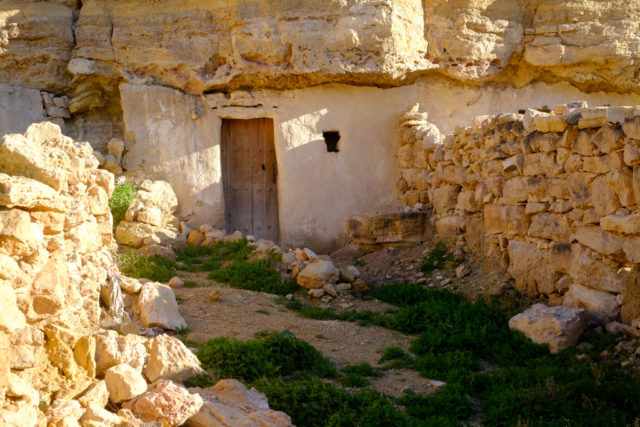
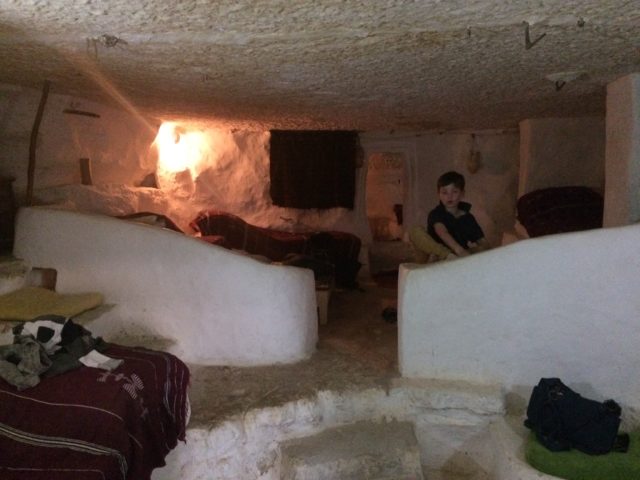
Just below the mountainside village of Chenini sits a newer village called New Chenini. It was built by the Tunisian government following the country’s independence from France in 1956. It was strategically placed so that villagers of Chenini could view it and be drawn from the mountainside and join modern life.
New Chenini boasts electricity and running water, as well as far easier means of importing and exporting. The original Chenini recently introduced electricity and running water, and still requires villagers to transport their harvests and products by foot on the backs of mules up and down the mountain.
With far fewer things to do in Chenini, the younger generations are being more drawn to the modernity of New Chenini, with about 120 families now occupying the new development. “Before, it was enough to just get enough to eat, wake up and do it again,” said Mr. Dignichi, a tourist guide who made day trips to Chenini. “Now we have ambitions. We want vacations, cars, a house. The wife needs a house separate from the in-laws.”
Climate changes are making it harder to live in Chenini
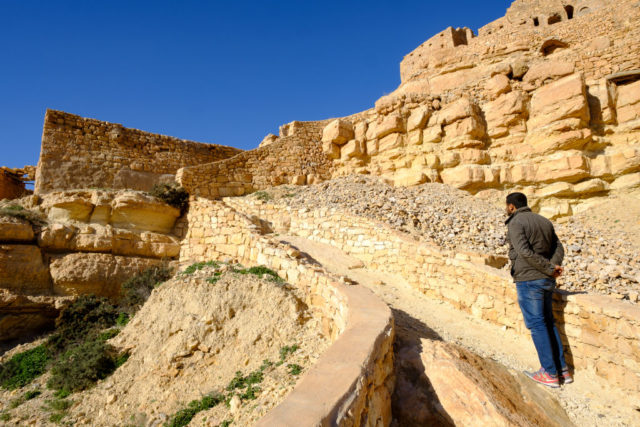
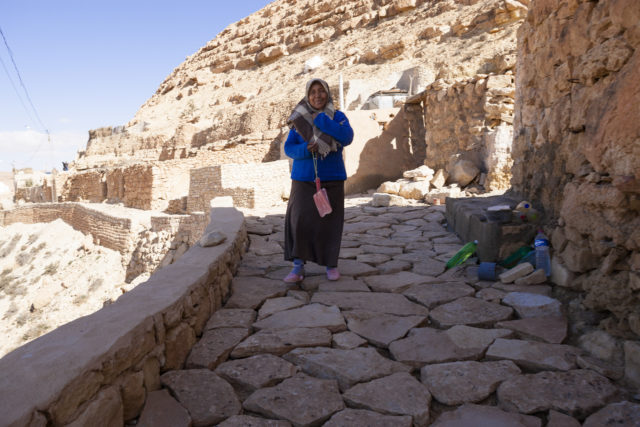
Not only are modern amenities compelling younger residents to migrate away from Chenini, but the effects of climate change are also making it harder to survive in the remote village. Decades ago, families could survive on dependable food sources throughout the year. In the spring, they could harvest wheat, barley, and lentils. In summer, they could collect figs and cactus pears, and in fall, dates could be pulled from the surrounding palms. During winter, residents would begin their olive harvest to press and make olive oil.
Now, villagers struggle to find enough food to survive, as severe drought has significantly reduced the natural production of agriculture in the area. There are barely enough figs and dates to harvest and olive trees are dying in large quantities. The lack of olives has forced five of the village’s traditional presses to shut down, seriously damaging residents’ ability to generate income.
In many cases, villagers are forced to purchase what they could once grow themselves with what little income they have. Even then, they often find that the one grocery store in the village has barren shelves. Villagers are thus forced to pay for the taxi to Tataouine in order to purchase food and other supplies, and are met with inflated prices that are being seen nationwide.
The village population is dwindling rapidly
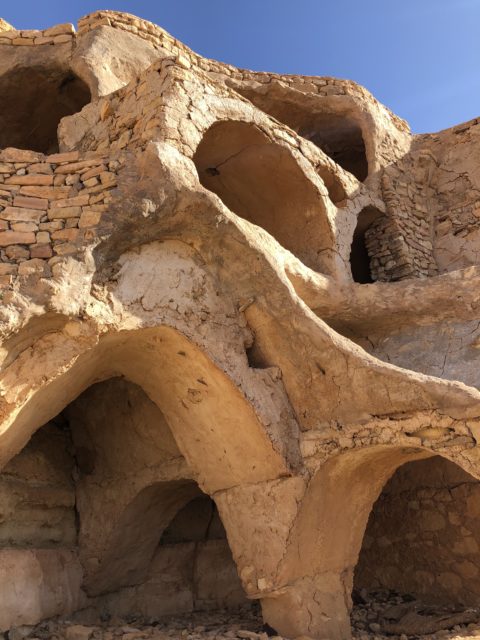
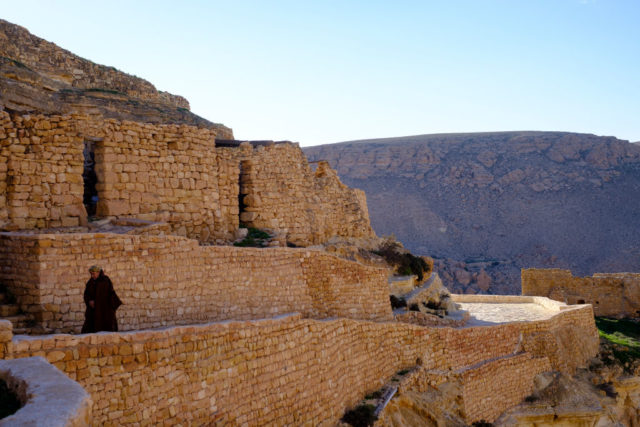
Beyond agriculture, the only other industry supporting the village was tourism, which was almost altogether wiped out following the COVID-19 pandemic. With no source of income and a lack of important amenities, many people made the decision to move out of Chenini, and even New Chenini. Many young men moved to Tunis, France, or other European cities to find work, leaving the women, children, and older men behind.
“Life is hard, but life is good,” said Ali Dignichi, 28, a Chenini tour guide. “Many people are rich — they have everything. But they’re not happy. If we had everything, life would have no sense. We need to work, bit by bit.” Those who leave in search of a better life often send money back to Chenini or simply build vacation homes there, but the traditions of the past are slowly being forgotten.
“One day, maybe, this village will be empty of people,” said Omar Moussaoui, 45, one of Chenini’s two remaining cave diggers. “And if we get scattered elsewhere, we won’t have the same traditions. If I go to Tunis, I’ll forget about all these traditions.”
More from us: Salton City: From Desert Oasis To Abandoned Wasteland
The village’s population was a meager 404 people in 2014. That number has likely dropped in the years since. Chenini has applied to become a UNESCO World Heritage Site and is still awaiting review of its application.
